#Neal Stephenson
Text
What makes movie action “good?”
There’s a John Wick movie in theaters. There seems to be pretty uniform agreement that John Wick movies have great action, and simultaneously, there seems to be a lot of general “Marvel fatigue,” some of which is specifically about the MCU, but also some of which is about “action blockbusters” that seem to put a lot of focus on action and spectacle that a lot of people seem to be growing increasingly disenchanted with. (See, for example: Tomorrow War (2021) starring Chris Pratt, Extraction (2020) starring Chris Hemsworth, and to round out the Chris roster we also have Wonder Woman 1984 (2020) with Chris Pine.)
Most of the discussion tends to focus on effects, and how making everything in a computer feels soulless while practical effects like the ones in John Wick and Everything Everywhere All At Once are superior, and there’s a certain degree to which blockbuster CG does look worse due to everything being computer generated. But I think a much bigger and more deep-seated problem is that blockbuster action is poorly structured.
There are a lot of great practical scenes in John Wick with choreography that is great not just in execution, but in concept: if you recreated them with computer animation, or hand-drawn animation, many of them would be just as fun. You could look at a storyboard with a director’s poorly-drawn pencil sketches and you’d still be able to follow the logic and understand what the scene’s impact is supposed to be. You can tell this, because people can describe these scenes, and regularly do exactly that, because they’re memorable. It’s what the legend of John Wick is all about. (And it’s not just the “top 10 most creative John Wick kills” listicles that remind us of that fact.)

The thing is, John Wick doesn’t rely on the unique outlandish props for memorable kills. Most of John Wick’s kills boil down to “point gun, pull trigger.” And yet despite that most of his kills are with bullets, so many of them feel unique. Each scene feels like it has a tempo to it, a sense of flow, a chain of cause and effect. “That guy is hiding behind a pillar, but his toe is sticking out. So I’ll shoot him in the toe, causing him to bend over in pain, exposing the rest of his body so I can shoot center of mass.” There’s always the moment when John Wick runs empty and has to reload before delivering the killshot.
There’s a storytelling principle that’s often applied to plot structure. This was famously described by Trey Parker to a bunch of NYU students on MTVU's "Stand In." Trey Parker describes the writers room as containing a massive white board, split into 3 acts, where they write down ideas scenes and rearrange them. Each scene has to be entertaining by itself, but they also need to be connected by a coherent narrative through-line.
"You don't want just one scene where, 'well, what was the point of that?' Take the beats of your outline, and if the words 'and then' belong between those beats, you've got something pretty boring. What should happen between every beat that you've written down is either the word 'therefore,' or 'but.'”
A happens, therefore B happens. Or, B doesn't happen, but C happens, therefore D happens. Repeat. You can use this to structure the plot for a 25-minute TV episode, or a 120-minute movie, or a 2-minute action scene. Follow it, beat by beat, and see if one leads to the next:
One of the evil henchmen comes swinging at our hero with a wooden chair raised over his head, but the hero dodges and the wooden chair smashes against the floor, shattering. Therefore, the ground is now covered with the broken remains of a wooden chair, so the mook picks up one of the long pieces of wood that served as a chair leg and begins swinging at the hero again. But the hero successfully dodges and the wooden club breaks and splinters in a way that causes it to become, therefore the mook starts trying to use the splintered end to stab the hero...
I’m not saying this is an amazing action scene, but it’s a competent one: each beat flows into the next. The chair becomes a chair leg, then the chair leg becomes a shiv. Each time the henchman comes rushing at the hero, he’s doing it with a different weapon. The scene has a logic to it: if you rearranged the shots, the scene wouldn’t make sense. You can’t start with a splintered piece of wood and then end on an intact chair.
So many mediocre action movies fail to deliver it. The bad guy punches the hero. And then he punches the hero again. And then he tries to kick the hero. And then he punches in a different, cooler way. There’s no real sense in which each beat is a consequence of what followed it: if you cut the scene up and rearranged the shots, a lot of people might not even notice. (And in fact that sort of thing happens all the time in the editing bay.)
Tony Zhou self-deprecatingly describes this problem when critiquing one of his own videos, saying “This is a list you could put in any order. That’s why it’s so boring.”
For examples of action cinema where every beat feels like a consequence of what preceded it, watch any classic Jackie Chan movie (the ones that came out of Hong Kong, not Hollywood). Tony Zhou describes it like this:
“So how does Jackie create action that is also funny? First off, he gives himself a disadvantage. No matter what film, Jackie always starts beneath his opponents. He has no shoes. He’s handcuffed. He has a bomb in his mouth.“

“From this point, he has to fight his way back to the top. Each action creates a logical reaction. And by following the logic, we get a joke.” (Jackie is facing an assailant with a gun; Jackie has a gun, but it’s empty. Therefore, Jackie fakes surrender, handing his empty gun to the assailant. Therefore, the assailant is now holding an unloaded gun in his left hand. The assailant now thinks he has control of the situation, but reaching for the unloaded gun distracted him the fact that Jackie was entering a fighting stance and getting ready to kick: therefore, when Jackie kicks, he succeeds in knocking the loaded gun out of the assailant’s right hand. Therefore, the assailant tries to fire at Jackie using the gun in his left hand -- which is empty, and he realizes it in a moment of surprise which Jackie seizes on by punching the assailant in the face.)
This is the joy of watching Jackie Chan films: much like the example of a chair (which morphs into a chair leg, which morphs into a shiv), a prop in a Jackie Chan movie is rarely just one thing. A ladder isn’t just a ladder; it’s a prop. And it’s several different kinds of props. Fighting with a ladder like this:

...is subtly different than fighting with a ladder after this happens:
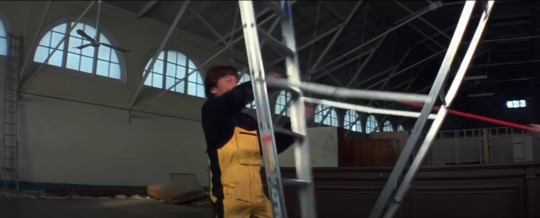
And if you flip it over a guy’s head, it suddenly becomes a cage:

...trapping a guy just long enough for him to look at you in surprise right before your fist intersects with his face.
It’s great for action comedy, but it’s also great for straight action: sometimes, the “punchline” is someone getting defeated in a surprising way. John Wick is one of the few big franchises of recent years to reliably do this sort of thing well.
Often, John Wick accomplishes this by being clever. But I think a big part of it comes down to the fact that John Wick is just mortal enough for the number of bad guy’s he’s facing to matter. Each scene needs a sense of “progress,” where the stakes are constantly changing, and sometimes the change in stakes is as simple as, “There are five bad guys, oh no!” Bang bang, pivot, bang bang. “Okay, now there are only three bad guys.” (It’s harder to do this when you’ve been injected with super soldier serum and wear a suit made of high-tech blast resistant stretch fabric: Captain America subduing five bad guys doesn’t feel meaningfully different from him subduing three bad guys, even if the way he punches them is really cool.)
Stakes matter! If threat level scales linearly with the number of bad guys on screen, then each scene will have a natural eb and flow to it as bad guys get gradually picked off (or as more of them stream into the room, or pick themselves up off the floor and reach for the gun they just dropped).
One of the MCU scenes that actually did this better than most is the famous Captain America elevator scene: first, Crossbones and two guys get onto the elevator with cap. A bit surprising. Why is that guy resting his hand on his hip so close to his gun? Several floors later, the elevator opens, and four more guys get on. They’re wearing suits, like you’d expect from people who just showed up for a day at the office. This is headquarters, there’s nothing to be worried about. So why is that guy sweating? Then, the door opens again, and three more guys get on -- and these guys are wearing tac gear. But hey, it’s Jack -- I know Jack, he was in the first ensemble movie, he can’t be one of the bad guys...so why is he standing directly between me and the door?
It’s a great example of slowly amping up the tension by gradually adjusting the threat level up. The scene even amps up the tension by having the magnetic handcuff, which leaves Cap in various stages of incapacitation throughout the fight. And he has to fight his way up from the bottom. But we very quickly go from this iconic shot:
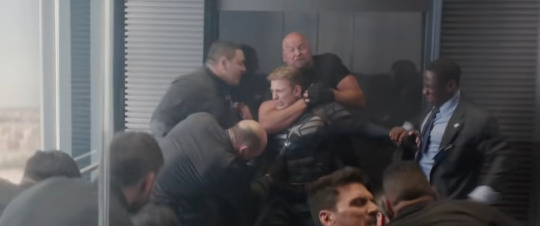
...then after literally three seconds of Cap delivering a rapid series of strikes to incapacitate most of the mooks, he’s back to fighting two or three of them at a time.
Despite there being ten bad guys in the elevator, it’s kind of hard to get a clear fix on how many of them attacking Cap at any given moment, all of the others existing in various states of injury and recovery after they get the wind knocked out of them. In fact, the only shot that allows us to get a full body count is after the fight is over:

But it’s still a fun scene, one of my favorites, succeeding at being fun and memorable.
The bigger issue is the need to be “epic”: threat level can’t scale linearly with the number of bad guys on screen when you want a scene where there are literally hundreds of enemies to fight off.
There’s a certain point at which the marginal effect of another bad guy on screen is effectively zero. Obviously, this is the case when you have hundreds or dozens of enemies on screen, but there’s a real sense in which “group of seven bad guys” doesn’t feel different from “group of six bad guys.” Our brains just categorize both as “a pretty big cluster.” Research tends to come to slightly different results on this, but it seems like humans count “one, two, three, four, many.” Once you have five bad guys on screen, adding a sixth bad guy doesn’t do anything to change the stakes. (That’s the problem with having a hero who’s so strong that you need to throw 10 bad guys at him to pose any threat.)
If you cap the total number of on-screen bad guys at five, then each enemy the hero defeats meaningfully changes the stakes, and John Wick does this a lot. In many cases, the flow just comes from watching the number of bad guys on screen decrease linearly as the hero picks them off, one by one. It gives the scene a natural scenes of progress, and it can sometimes be played for comedy, like Neal Stephenson does in Snow Crash in a scene described by a sniper’s dialog:
"It's, like, one of them drug dealer boats," Vic says, looking through his magic sight. "Five guys on it. Headed our way." He fires another round. "Correction. Four guys on it." Boom. "Correction, they're not headed our way anymore." Boom. A fireball erupts from the ocean two hundred feet away. "Correction. No boat."
That’s a (very short) scene with flow. You can’t rearrange the beats; every beat leads to the next. Follow the logic, and arrive at the punchline.
244 notes
·
View notes
Text
Round 1
Let's star with the end of the world, why don't we? Get it over with and move on to more interesting things.
-The Fifth Season, N.K. Jemisin
The Deliverator belongs to an elite order, a hallowed subcategory. He's got esprit up to here. Right now, he is preparing to carry out his third mission of the night. His uniform is black as activated charcoal, filtering the very light out of the air. A bullet will bounce off its arachnofiber weave like a wren hitting a patio door, but excess perspiration wafts through it like a breeze through a freshly napalmed forest, Where his body has bony extremities, the suit has sintered armorgel: feels like gritty jello, protects like a stack of telephone books.
-Snow Crash, Neal Stephenson
Taran wanted to make a sword; but Coll, charged with the practical side of his education, decided on horseshoes. And so it had been horseshoes all morning long. Taran's arms ached, soot blackened his face. At last he dropped the hammer and turned to Coll, who was watching him critically.
-The Book of Three, Lloyd Alexander
#tournament poll#polls#books#reading#round 1#the fifth season#nk jemisin#snow crash#neal stephenson#the book of three#lloyd alexander
54 notes
·
View notes
Text







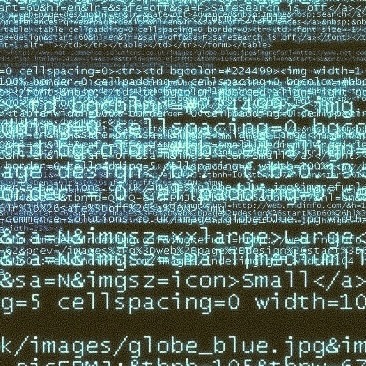

books I’ve read in 2023 📖 no. 106
Snow Crash by Neal Stephenson
“See, the world is full of things more powerful than us. But if you know how to catch a ride, you can go places.”
28 notes
·
View notes
Text
We know, we know, everyone is sick of hearing about the metaverse... Unless it involves dystopias and references to Snow Crash!
#snow crash#dystopia#neal stephenson#meta#metaverse#mark zuckerberg#social media#research#jstor#jstor daily
118 notes
·
View notes
Text
I like erasmas anathem bc he is just some guy and a little bit fail but also legitimately smart but also has an inferiority complex and seems to think that the sexiest thing a girl can be is mind-bendingly smart (he’s right about this)
23 notes
·
View notes
Text
Snow Crash fan art anyone?
Here's Y.T. from the book Snow Crash!


#snow crash#neal stephenson#fanart#art#artists on tumblr#artwork#digital art#adobe photoshop#cyberpunk art
10 notes
·
View notes
Text
The Race for the Everything App in the West: Unraveling the Quest for Digital Domination
In the neon-drenched, cyberpunk reality of the 21st century, the digital realm is witnessing a colossal battle, reminiscent of Neal Stephenson's speculative universes. Tech corporations, with their sights set on the horizon, are not just competing but are on an ambitious quest to forge the "Everything App"—a digital El Dorado that promises to centralize our online lives. This pursuit, led vigorously by X (formerly known as Twitter) and echoed by a symphony of other platforms, is transforming the way we interact with digital services.
At the heart of this evolution lies a simple, yet profound strategy: expansion beyond core functionalities. Apps that once specialized in specific domains are now crossing into territories uncharted, offering a suite of services that range from messaging and social networking to financial transactions and beyond. This trend is not a mere coincidence but a calculated move towards creating a digital ecosystem where users can perform every conceivable online activity within a single app.
The Vanguard of the Everything App
X, under the stewardship of Elon Musk, is potentially the most audacious contender in the race. Initially a platform for microblogging, X is now venturing into areas like payment processing and content creation, aiming to transform itself into an indispensable tool for its users. However, X is not alone in this pursuit. Apps like WeChat in China have already demonstrated the viability of the "everything app," serving as a model for Western counterparts.
Facebook (now Meta), with its vast suite of services including Instagram, WhatsApp, and Oculus, is another titan striving to stitch together a comprehensive digital tapestry. Google, through its ecosystem encompassing Gmail, Google Pay, and YouTube, is also inching towards creating a unified experience. Meanwhile, Amazon's expansion into cloud services, media streaming, and even groceries underscores the same ambition: to be the one-stop digital shop for its users.
The Siren Song of Convenience
The allure of an everything app lies in its promise of unparalleled convenience. Imagine a digital Swiss Army knife that not only connects you with friends and family but also handles your finances, entertains, educates, and even shops for you. The potential benefits are immense, offering a seamless integration of digital services that could simplify user experience, enhance efficiency, and possibly even reduce the digital clutter of having multiple apps for different needs.
A Dystopian Shadow
However, beneath the glossy surface of convenience, there lurks a more sinister possibility. The consolidation of services into a single platform raises alarming concerns about privacy, data security, and monopolistic control over the digital lives of billions. The more we rely on a single app for our daily needs, the more we risk creating a digital monoculture vulnerable to surveillance, censorship, and exploitation. In a dystopian twist, the everything app could become the ultimate tool for digital hegemony, where choice is an illusion, and autonomy is traded for convenience.
The Unstoppable Momentum
Despite the dichotomy of potential outcomes, the race towards the everything app is unlikely to slow down. The convergence of services into unified platforms reflects a broader trend in digital evolution, driven by user demand for efficiency and the corporate quest for dominance. As this race accelerates, we find ourselves at a crossroads, navigating between the utopian dream of digital convenience and the dystopian nightmare of centralized control.
The everything app is both a looming threat and a beacon of progress in our communications landscape. Its emergence is a testament to our insatiable appetite for innovation and our willingness to explore the unknown. As we venture further into this digital frontier, the decisions we make today will shape the cybernetic world of tomorrow. The everything app is not just a possibility; it is an inevitability. Time will tell whether it becomes a tool for liberation or an instrument of control.
In the words of Neal Stephenson, we are coding our own new world, and in this world, the everything app stands as both the zenith of our aspirations and the nadir of our fears. As we hurtle towards this uncertain future, one thing is clear: the digital landscape will never be the same again.
- REV1
#everythingapp#x#elon musk#elon#cyberpunk#neal stephenson#tumblr#technology#tech#communications#comms#digital
8 notes
·
View notes
Text




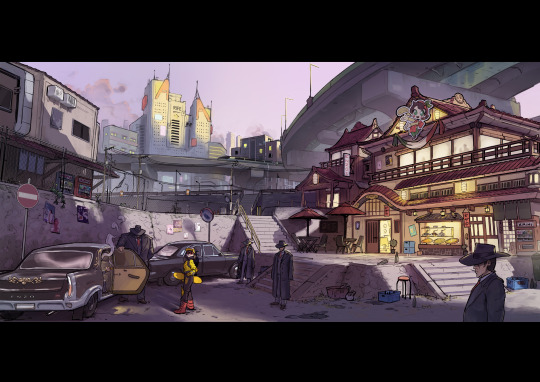

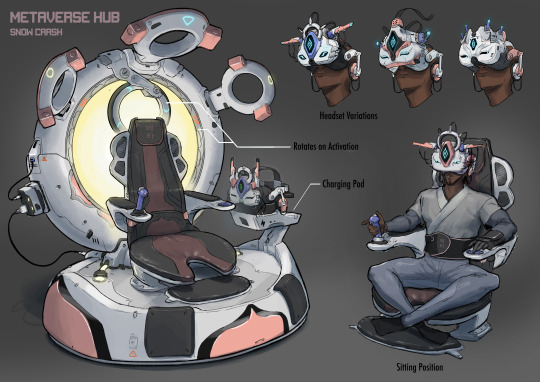
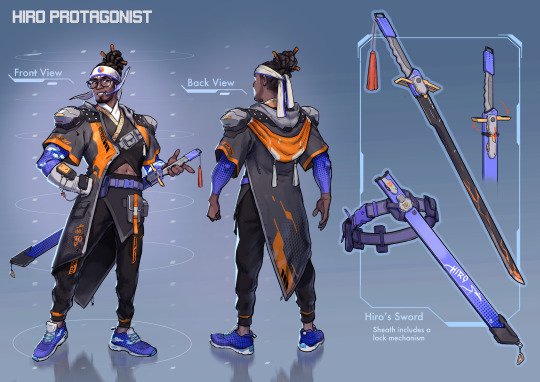

Snow Crash
A Design Project I did for one of my finals at FZD School of Design. This is based on Neal Stephenson’s Snow Crash novel. Really tried to push an Overwatchy aesthetic. I super had fun with this.
92 notes
·
View notes
Text
Snow Crash review

3/5 stars
Recommended if you like: hard sci-fi, dystopian sci-fi, tech bros, sword fighting, VR
TW statutory rape
So...let's have this be the last time I'm fooled by pretty colors and Sumerian cuneiform (also the last time I take a book recommendation from another book). This book and I did not get off to a good start, what with it opening with a million random words thrown together with exposition on what those words meant. Then I got used to it, then Stephenson had to bring in the anthropology and linguistics.
Now, normally I love seeing those things in books. I love both of those subjects and studied them in college and on my own time. That being said, Snow Crash is like if a tech bro was court mandated to take linguistics 101 and anthropology 101, only paid attention 33% of the time, then retold his tech bro buddies all about ancient civilization and ancient languages after having a couple of beers. This is, perhaps, a bit mean, because Stephenson does get some of it right. But then he goes off the rails and while I understand this is sci-fi....well, the basic facts are just plain wrong. Go off, but at least base it in fact.
A slight rant, so perhaps skip these next two paragraphs if you don't want to read about me complaining about linguistics and anthropology more, I'll try to make it brief. Stephenson was off to a good start talking about Sumer and Sumerian religion, he actually stays pretty on track with Sumerian religion, interestingly enough, but then he goes and starts talking about how Sumer was stagnant and yet somehow everyone spoke Sumerian and how me dragged Sumerians out of cave-man-hood.....except, Sumerian wasn't the first language. It's just the oldest language we have written attestation for. People could speak, and were modern humans, well before Sumer became a thing. Hell, Akkadian and and some form of Proto-Old-Chinese (among others) were both spoken at that time, the Sumerians just got to writing first. (and let's not even get into the "cave man" concept)
Further, Sumerian didn't just magically vanish, what happened was a series of smaller and larger civilization collapses caused by a whole host of factors, through which Sumerian gradually went from being the predominately spoken language of the area to a language spoken almost solely religiously due to the influx of newcomers and conquerors to the region combined with certain conquering dynasties forcibly migrating native Sumerians to the outskirts of the empire (where they had to interact with the natives there, who definitely did not speak their language) and bringing other cultural, linguistic, and ethnic groups into the traditional Sumerian heartland. Also, more minor, but there were not "tens of thousands" of languages being spoken in the 1980s. We have approximately 7000 languages today and while we are losing languages at a rapid rate, we are not losing them that quickly. Language, and by some extension culture, was the whole basis of this book and Stephenson just got so much of that basis wrong that, while I enjoyed a decent portion of it, I just couldn't get over the incorrectness of it,
Okay, back to the regularly scheduled programming. As far as plot goes, it was actually pretty interesting following Hiro and Y.T. as they got tangled up in web after web of this conspiracy. There were so many moving parts that seemed disparate from one another and yet somehow connected, and I really enjoyed seeing how it all came together. I liked how things built up and I think the showdown with Hiro gets a good climax, but stuff in the real world fell a little flat. I would've liked to have a firmer resolution with things, even if it left some things open ended. As is, it just feels like a let down.
Hiro was a hard character to get into. He's just kind of there for the beginning part of the book, a problem which is compounded by the sheer amount of lingo and information being dumped on readers at the beginning of the book. He turns out to actually be a pretty chill dude later on and even when he was confused, he at least seemed to grasp things quickly, so there wasn't too much just standing around and questioning things.
Y.T. was a bit easier to like from the get-go, though her lingo is just as confusing as Hiro's. 15 definitely seems young to be doing a lot of the things she's doing, and while I know her mom works long hours for the Feds, I'm surprised she has 0 clue what her daughter is doing. I liked Y.T.'s spunk and tenacity. She could get freaked out at times, but she was a go-getter and immediately jumped into doing anything she was interested in or thought would help.
While I did spend a good portion of this review complaining about the technical linguistic and anthropological side of the book, I did enjoy some of the book. The problem is, is that combined with the factual problems, the book reads too much like your stereotypical hard sci-fi that's easy to make fun of because the authors are using a gazillion weird words to enforce the 'futuristic' idea. Things like "franchulate" I can see where it comes from; 'Kouriers' are on thin ice, but whatever, they're trademarked; but there was a lot of stuff that I thought was just unnecessarily in "sci-fi lingo." All of this put together, plus the very ending of the book, reduced my overall enjoyability.
#book#book review#books#bookstagram#booklr#bookblr#bookaholic#bookish#snow crash#neal stephenson#scifi book#scifi#hard sci fi#hard science fiction
7 notes
·
View notes
Text
You'll find the other polls in my 'sf polls' tag / my pinned post.
#polls#science fiction#sf polls#out of the silent planet#c.s. lewis#the last man#mary shelley#watership down#richard adams#the inverted world#christopher priest#a canticle for leibowitz#walter miller#walter m. miller#snow crash#neal stephenson#leviathan wakes#james s.a. corey#the forever war#joe alderman#ubik#philip k. dick
35 notes
·
View notes
Text
Oooooh myyyyy
Snow Crash fans? Or like.. a freaking handmade Japanese sword???




https://www.sothebys.com/en/buy/auction/2023/snow-crash/weta-workshop
#taichi#kitsune#neal stephenson#zenko#damascus#weta workshop#Grordmore Heavy Industries#Sword One#snow crash
30 notes
·
View notes
Text
My mother asked "what are you reading" "The Diamond Age" "what's it about" "It's a sci-fi story about a future where things can be made directly from atoms" "oh cool, what's happening" "they're talking about the honourable Confucian nature of Kentucky Fried Chicken."
74 notes
·
View notes
Text
Going forward whenever there's still capitalism in some sci-fi media set in the future and it's not a hopelessly depressing dystopia, I count it as a plothole.
13 notes
·
View notes
Text
I feel like in the realm of “science fiction,” Do Androids Dream of Electric Sheep, Tender is the Flesh, and Snow Crash create an interesting trilogy all surrounding western capitalism and its effects. On one side there’s Androids, where Dick creates an intense drive for empathy (for animals, primarily) as overcompensation for the lack of connection people have in the real lives towards other humans (think pigeon-heads, thing emigration to the moon, think Mercerism and empathy boxes) and the creation of androids as non-human, non-animal slaves that aren’t worthy of empathy but take over the labor that “real and worthy” humans “shouldn’t have to do” because they are intrinsically better than these other groups. And then there’s Tender is the Flesh, the most truly dystopian, that has cannibalism as a deep metaphor for how we’re already destroying and dehumanizing each other in the pursuit of capitalism: the intense cognitive dissonance we all reach for and support, not just allow, in order to go about our daily lives, and the death of empathy that leads humans to do such inhumane acts. And then there’s Snow Crash. The ultimate individualistic hyper-capitalistic future where everything is corporatized and empathy has dissolved to allow survival, because no one can afford to assist anyone else, and everyone relies on avatars to escape the super shitty world they can’t afford to change. I think these three all lend understanding to each other and allow for deeper interpretation of just how deep capitalism can go to undermine the control we think we have over society, and just how much personal power we have in such a deeply flawed system.
#augustina bazterrica#neal stephenson#philip k dick#philip k. dick#tender is the flesh#snow crash#do androids dream of electric sheep#dodoes#dodes#science fiction#capitalism#literary analysis#lit#lit fic
6 notes
·
View notes
Text
Moral reforms and deteriorations are moved by large forces, and they are mostly caused by reactions from the habits of a preceding period.'
--first line from the Diamond Age by Neal Stephenson
4 notes
·
View notes
